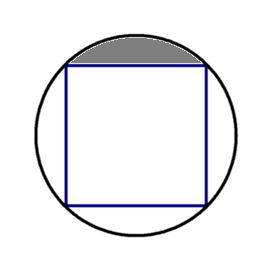Events & Promotions
|
|

GMAT Club Daily Prep
Thank you for using the timer - this advanced tool can estimate your performance and suggest more practice questions. We have subscribed you to Daily Prep Questions via email.
Customized
for You
Track
Your Progress
Practice
Pays
Not interested in getting valuable practice questions and articles delivered to your email? No problem, unsubscribe here.
- Nov 20
07:30 AM PST
-08:30 AM PST
Learn what truly sets the UC Riverside MBA apart and how it helps in your professional growth - Nov 20
01:30 PM EST
-02:30 PM IST
Learn how Kamakshi achieved a GMAT 675 with an impressive 96th %ile in Data Insights. Discover the unique methods and exam strategies that helped her excel in DI along with other sections for a balanced and high score. - Nov 22
06:30 AM PST
-08:30 AM PST
Let’s dive deep into advanced CR to ace GMAT Focus! Join this webinar to unlock the secrets to conquering Boldface and Paradox questions with expert insights and strategies. Elevate your skills and boost your GMAT Verbal Score now! - Nov 22
11:00 AM IST
-01:00 PM IST
Do RC/MSR passages scare you? e-GMAT is conducting a masterclass to help you learn – Learn effective reading strategies Tackle difficult RC & MSR with confidence Excel in timed test environment - Nov 23
11:00 AM IST
-01:00 PM IST
Attend this free GMAT Algebra Webinar and learn how to master the most challenging Inequalities and Absolute Value problems with ease. - Nov 24
07:00 PM PST
-08:00 PM PST
Full-length FE mock with insightful analytics, weakness diagnosis, and video explanations! - Nov 25
10:00 AM EST
-11:00 AM EST
Prefer video-based learning? The Target Test Prep OnDemand course is a one-of-a-kind video masterclass featuring 400 hours of lecture-style teaching by Scott Woodbury-Stewart, founder of Target Test Prep and one of the most accomplished GMAT instructors.
Kudos
Bookmarks
D
Be sure to select an answer first to save it in the Error Log before revealing the correct answer (OA)!
Difficulty:
 35%
(medium)
35%
(medium)
Question Stats:
77% (02:18) correct 23%
(02:18)
wrong
23%
(02:18)
wrong  based on 565
sessions
based on 565
sessions
History
Date
Time
Result
Not Attempted Yet
The figure below shows a square inscribed in a circle with a radius of \(\sqrt{6}\). What is the area of the shaded region?

A. \(\pi\)
B. \(6\pi - \sqrt{12}\)
C. \(6\pi - 2\sqrt{6}\)
D. \(3(\frac{\pi}{2} - 1)\)
E. \(3 \frac{\pi}{4} - \frac{3}{2}\)

A. \(\pi\)
B. \(6\pi - \sqrt{12}\)
C. \(6\pi - 2\sqrt{6}\)
D. \(3(\frac{\pi}{2} - 1)\)
E. \(3 \frac{\pi}{4} - \frac{3}{2}\)
Kudos
Bookmarks
Official Solution:
The figure below shows a square inscribed in a circle with a radius of \(\sqrt{6}\). What is the area of the shaded region?

A. \(\pi\)
B. \(6\pi - \sqrt{12}\)
C. \(6\pi - 2\sqrt{6}\)
D. \(3(\frac{\pi}{2} - 1)\)
E. \(3 \frac{\pi}{4} - \frac{3}{2}\)
The area of the shaded region is equal to one-fourth of the difference between the area of the circle and the area of the square.
The area of the circle is given by \(\pi{r^2}=6\pi\).
Given that the diagonal of the square is equal to the diameter of the circle, the diagonal is \(2\sqrt{6}\). The area of the square can be expressed as \(\frac{\text{diagonal}^2}{2}=12\).
Thus, the area of the shaded region is \(\frac{1}{4}(6\pi - 12) = 3(\frac{\pi}{2} - 1)\).
Answer: D
The figure below shows a square inscribed in a circle with a radius of \(\sqrt{6}\). What is the area of the shaded region?

A. \(\pi\)
B. \(6\pi - \sqrt{12}\)
C. \(6\pi - 2\sqrt{6}\)
D. \(3(\frac{\pi}{2} - 1)\)
E. \(3 \frac{\pi}{4} - \frac{3}{2}\)
The area of the shaded region is equal to one-fourth of the difference between the area of the circle and the area of the square.
The area of the circle is given by \(\pi{r^2}=6\pi\).
Given that the diagonal of the square is equal to the diameter of the circle, the diagonal is \(2\sqrt{6}\). The area of the square can be expressed as \(\frac{\text{diagonal}^2}{2}=12\).
Thus, the area of the shaded region is \(\frac{1}{4}(6\pi - 12) = 3(\frac{\pi}{2} - 1)\).
Answer: D
General Discussion
Kudos
Bookmarks
I would like to know if we can use the 45-45-90 triangle properties here
















